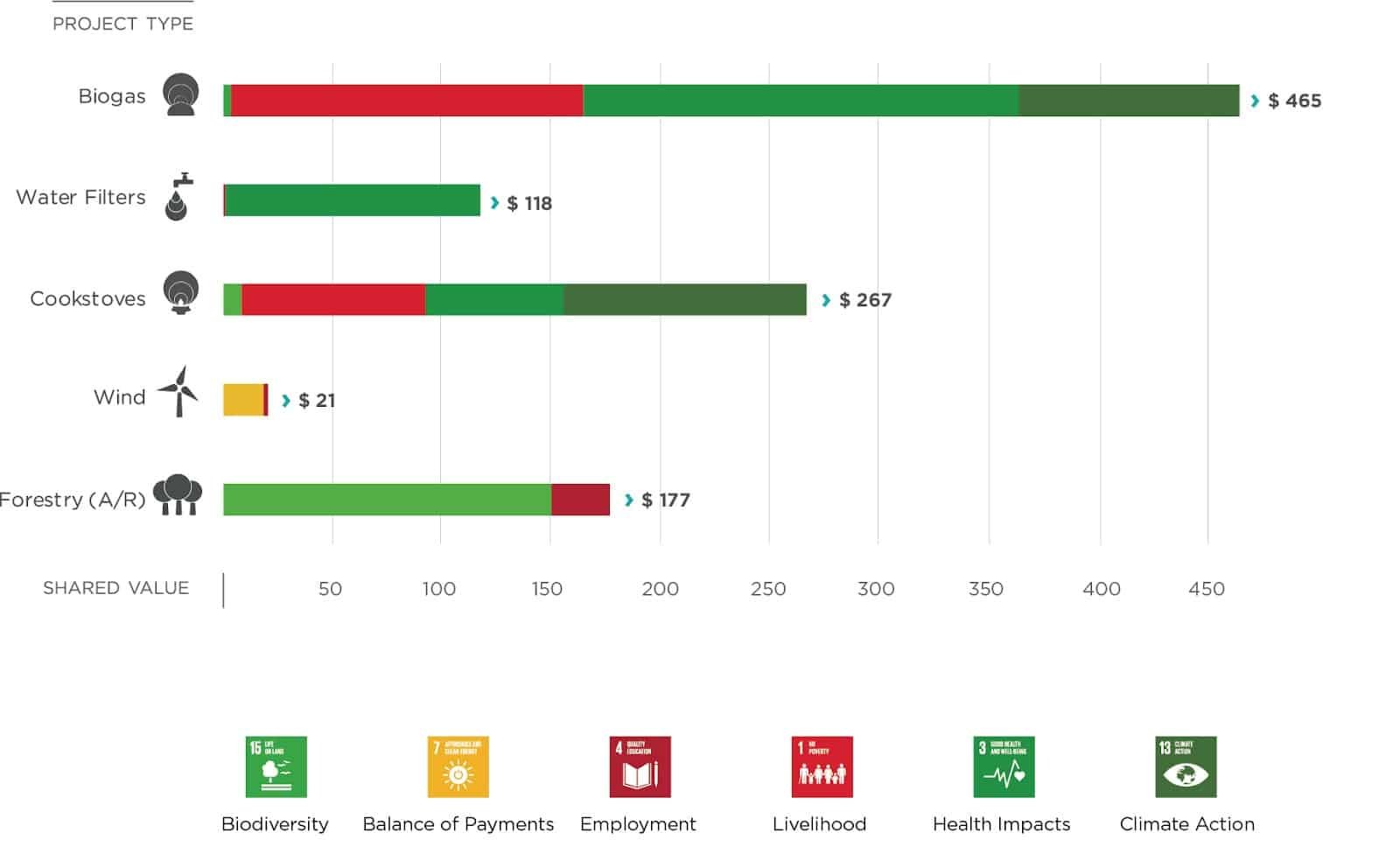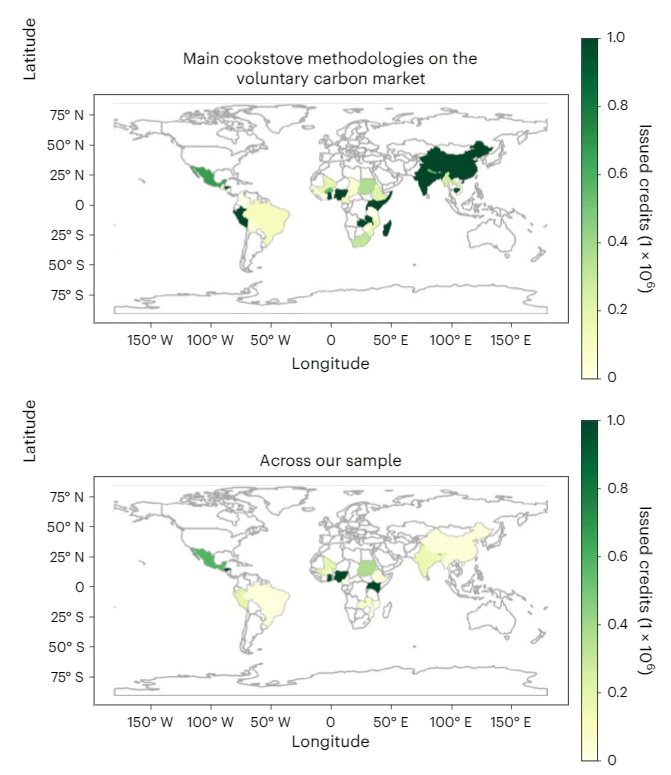Companies wanting to offset their harmful emissions have used a type of carbon credit known as “cookstove credits” to compensate for their pollution. But a new study suggests that the clean cookstove projects may be overstating their impact by about 1,000%.
The cookstove projects aim to address issues related to household air pollution and deforestation caused by traditional cooking methods. These projects are seen as a way to achieve UN sustainable development goals (SDGs) and have gained popularity.
Within 6 months in 2023, a report showed cookstove projects issued the most new credits in the market, taking 15% of the total, while also registering the most new projects.
However, the study published in Nature Sustainability suggests that these projects are exaggerating their climate benefits. It reveals that 9 out of 10 of the 96 million certified cookstove credits don’t avoid the emissions they claim.
Burning Questions: The Climate Impact of Cookstove Carbon Credits
Around 3.2 million premature deaths occur annually due to household air pollution, according to the Clean Cooking Alliance (CCA). Burning wood for cooking also contributes to about 2% of global greenhouse gas emissions.
The CCA, backed by governments including the Netherlands, Canada, and the United States, is working on an improved methodology for cookstove credits. The CCA aims to address the challenges associated with accurately measuring emissions reductions from cookstove projects. This is due to the complexity and resource-intensive nature of the task.
The alliance believes that the carbon market can play a significant role in addressing this issue with carbon credits.
Carbon credits represent one tonne of carbon emissions in theory. Companies buy them to offset their emissions, allowing them to neutralize their carbon footprint. These market instruments are facing increased scrutiny as concerns grow about the effectiveness of carbon offset schemes.
Cookstove credits, a type of carbon credit, have become one of the fastest-growing project types on the voluntary carbon market. These credits are issued when cleaner or less energy-intensive cookstoves are distributed to communities that traditionally rely on dirty fuels like wood or kerosene.
They typically cost much more than the other types of carbon credits available today, given the multiple SDGs they address. For instance, the carbon pricing from Gold Standard below shows that cookstove credits are priced higher than forestry credits.
Monetary Value of Gold Standard Project Impacts/Ton of CO2 Emissions Reductions


As of May 2023, cookstove projects represented 1,213 out of the 7,933 project activities on the VCM. They also generated ~78.9 million total issued credits in the market.
Moreover, cookstove offset projects can progress several SDGs such as climate, energy, health, gender, poverty and deforestation.
But the study, conducted by researchers at the University of California, Berkeley, challenges the projects’ claim. The researchers indicate that many offsetting schemes claiming to support “clean” cookstoves often fail to meet World Health Organization standards.
Their results raise concerns about the accuracy of the claimed climate benefits of such projects. They’re calling for a closer examination of their impact on air quality, deforestation, and overall environmental and social benefits.
Carbon Cookout: The Environmental Benefits of Cookstove Projects
The research indicates that the rules allow projects to exaggerate stove usage and the resulting benefits for nearby forests. In turn, they significantly inflate the claimed benefits for climate and biodiversity, the study noted.
Issued Cookstove Credits Across the VCM vs Study Sample


While acknowledging the issues, the researchers propose that reforms to the rules governing carbon credits could still make them a meaningful source of climate finance if properly implemented. They also offer a method for clean cookstove projects to avoid overstating their impact.
Some companies have reportedly adopted those practices during the paper’s peer-review process.
The lead author of the study, Annelise Gill-Wiehl, highlighted the potential impact of over-crediting. She stated that it “replaces direct emission reduction and other more effective climate mitigation activities”.
The study contributes to the ongoing scrutiny of the unregulated voluntary carbon market. Major concerns center on the generation of potentially questionable carbon offsets.
Barbara Haya, the director of the Berkeley Carbon Trading Project and a co-author of the study, expressed hope that the recommendations provided could contribute to improving the quality of carbon credits.
Clearing the Air: The Controversy
In response to the study, an open letter from carbon project developers and researchers highlighted concerns about the research. They argued that the academics focused on larger cookstove projects, which usually issued more credits distributed than smaller initiatives.
Carbon credit registries Verra and Gold Standard disputed the findings.
The Gold Standard, a major carbon credit certifier, has disputed the findings. Gold Standard stated that the study’s conclusions weren’t supported by the evidence and were at odds with wider academic literature. The researchers acknowledged that Gold Standard produced the best-quality method for producing offsets, with only a 1.5 times over-crediting.
Verra, the world’s largest carbon standard, also expressed disappointment in the continued attention on the study. The certifier emphasized that the findings did not directly relate to its current methods.
Verra is developing a new methodology for cookstoves that reflects best practices and includes measuring techniques to verify stove usage.
The cookstove company ATEC, working with UC Berkeley to measure benefits more accurately, supported the research’s goal of ensuring accurate emission reductions.
The study challenging the accuracy of cookstove carbon credits raises critical concerns about the claimed climate benefits. The industry disputed the findings, but the call for improved regulations and accurate measurements remain to ensure transparency and effectiveness of carbon offset markets.
- SEO Powered Content & PR Distribution. Get Amplified Today.
- PlatoData.Network Vertical Generative Ai. Empower Yourself. Access Here.
- PlatoAiStream. Web3 Intelligence. Knowledge Amplified. Access Here.
- PlatoESG. Carbon, CleanTech, Energy, Environment, Solar, Waste Management. Access Here.
- PlatoHealth. Biotech and Clinical Trials Intelligence. Access Here.
- Source: https://carboncredits.com/up-in-smoke-study-questions-accuracy-of-cookstove-carbon-credits/



